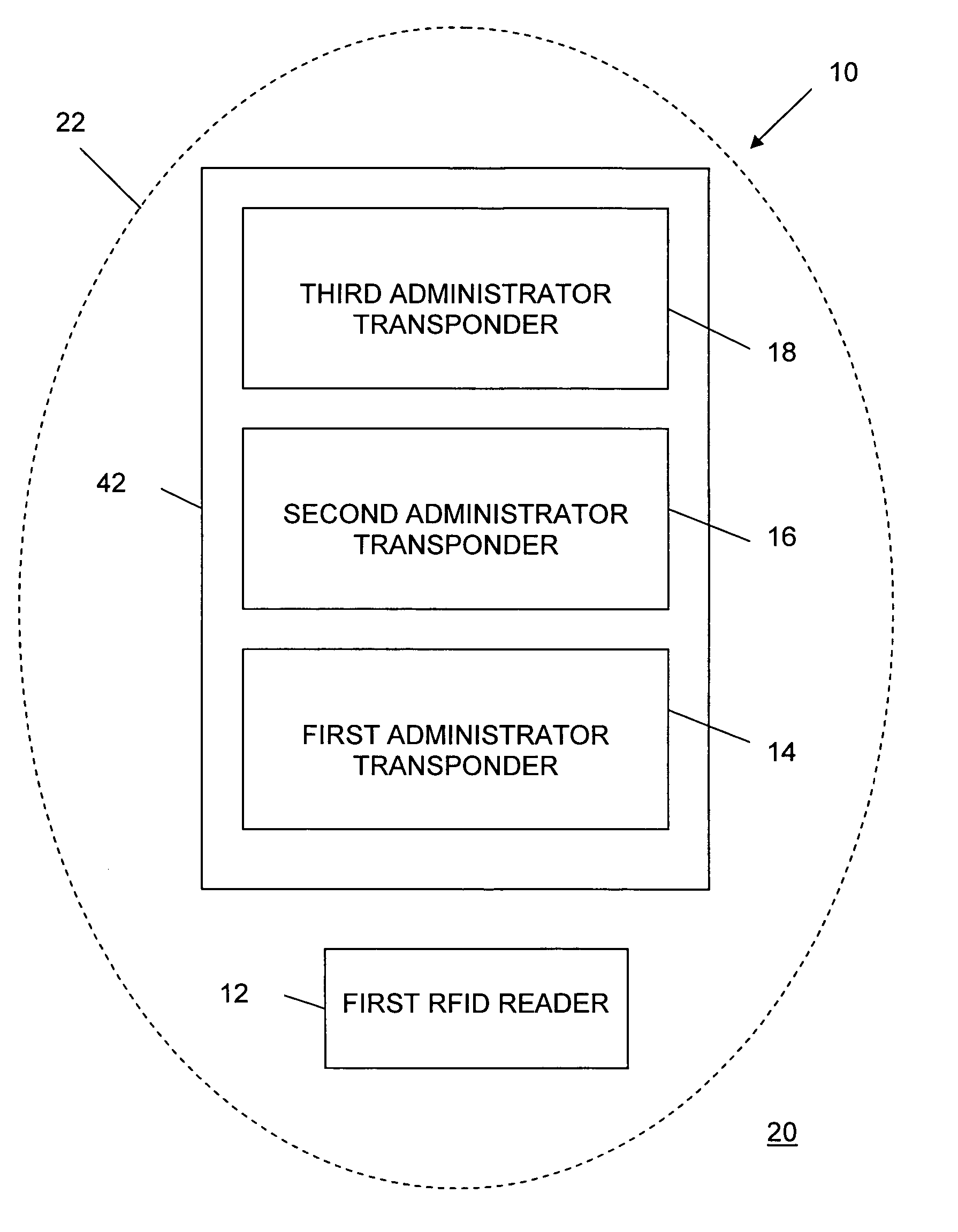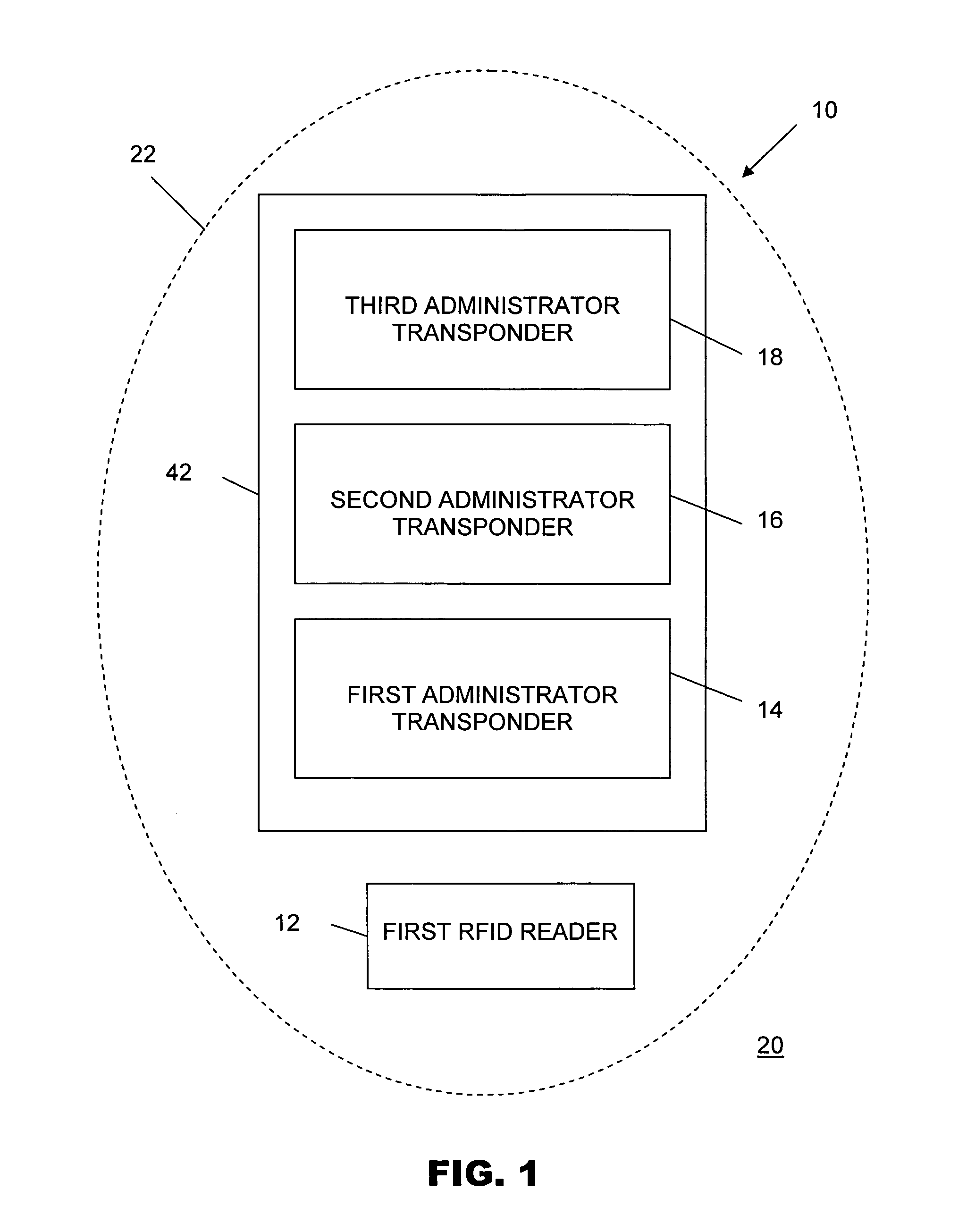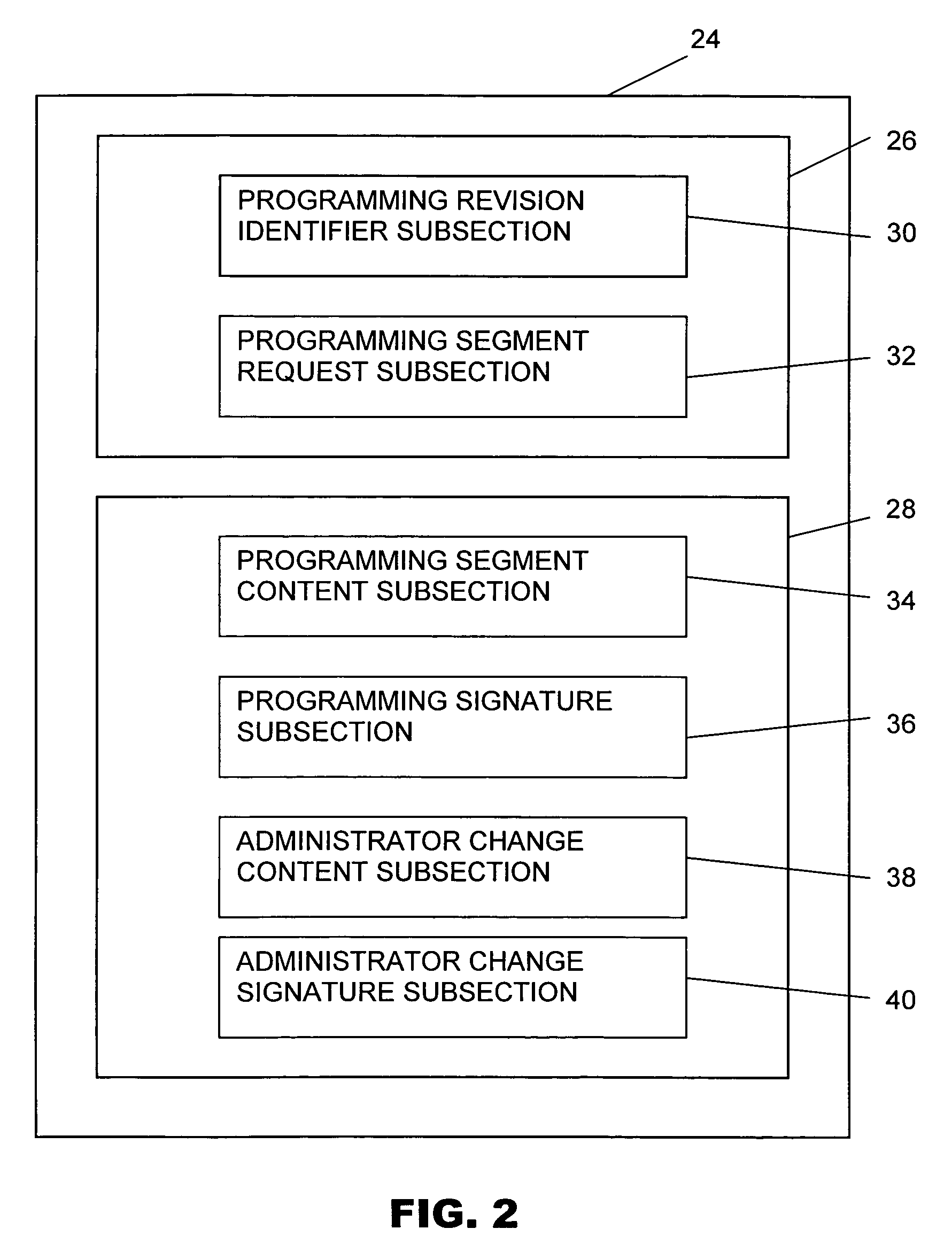RFID system having a field reprogrammable RFID reader
a technology of rfid reader and rfid system, which is applied in the direction of subscriber station connection selection arrangement, indirect connection of subscriber station, sensing record carrier, etc., can solve the problems of large reading circuitry and programming, large manufacturing challenge of rfid readers, and inability to manufacture rfid readers
- Summary
- Abstract
- Description
- Claims
- Application Information
AI Technical Summary
Benefits of technology
Problems solved by technology
Method used
Image
Examples
Embodiment Construction
[0030]Referring initially to FIG. 1, a conceptualized embodiment an RFID system having utility in the method of the present invention is shown and generally designated 10. The RFID system 10 comprises an RFID reader 12, a first RFID transponder 14, a second RFID transponder 16, and a third RFID transponder 18. The RFID transponders 14, 16, 18 are either active devices, which contain an internal electrical power source, or passive devices, which are not physically coupled with an electrical power supply. In the case of active devices, the electrical power required to operate the RFID transponders 14, 16, 18 is provided by the internal electrical power source, such as a battery. In the case of passive devices, the electrical power required to operate the RFID transponders 14, 16, 18 is indirectly supplied to the RFID transponders 14, 16, 18 by electromagnetic waves, which are periodically propagated through open space 20 to the RFID transponders 14, 16, 18 from the RFID reader 12. Whe...
PUM
 Login to View More
Login to View More Abstract
Description
Claims
Application Information
 Login to View More
Login to View More - R&D
- Intellectual Property
- Life Sciences
- Materials
- Tech Scout
- Unparalleled Data Quality
- Higher Quality Content
- 60% Fewer Hallucinations
Browse by: Latest US Patents, China's latest patents, Technical Efficacy Thesaurus, Application Domain, Technology Topic, Popular Technical Reports.
© 2025 PatSnap. All rights reserved.Legal|Privacy policy|Modern Slavery Act Transparency Statement|Sitemap|About US| Contact US: help@patsnap.com



